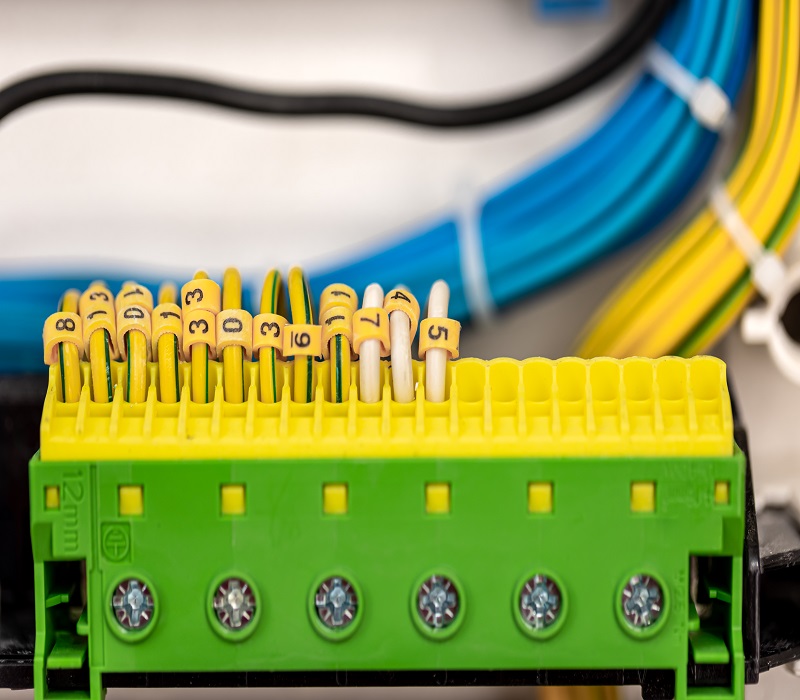Introduction: At a Glance
In the relentless pursuit of miniaturization, engineers are constantly challenged to pack more functionality into ever-shrinking devices. This demands components that are not only small but also reliable and easy to integrate. For connecting high-density flexible printed circuits (FPCs) or flat flexible cables (FFCs), a specific class of connectors is required. The Molex 39850-0500 is a quintessential example of this critical component, representing a perfect blend of precision engineering and practical design for modern electronics.
This article provides a comprehensive, deep-dive into the Molex 39850-0500 connector. We will dissect its specifications, explore its common applications, guide you through the mating process, and provide essential information for sourcing and integrating it into your next design.
Executive Summary: The Pyramid’s Peak
For the engineer or procurement specialist who needs the vital statistics immediately, here are the most critical details of the Molex 39850-0500:
- Product Type: Surface Mount (SMT), Bottom Entry, FFC/FPC Connector.
- Pitch: 0.50mm (0.0197″) – This ultra-fine pitch is its defining characteristic.
- Number of Positions: 10 – This denotes it is designed for a 10-conductor flat flex cable.
- Key Feature: A ZIF (Zero Insertion Force) sliding actuator latch that ensures a secure, reliable connection without stressing the fragile cable contacts.
- Primary Use: Providing a dependable, low-profile board-to-board or board-to-cable interface in space-constrained electronic devices like smartphones, tablets, cameras, and medical wearables.
This connector is part of Molex’s broader 39850 series, which offers various positions (circuit counts) while maintaining the same 0.50mm pitch and form factor.
Detailed Technical Specifications and Features
Now that we’ve covered the essentials, let’s delve into the detailed specifications that define the component’s performance and integration requirements.
Electrical Specifications
- Voltage Rating: 50 V AC/DC
- Current Rating: 0.5 A per contact
- Contact Resistance: 30 mΩ maximum
- Insulation Resistance: 100 MΩ minimum
- Dielectric Withstanding Voltage: 500 V AC for one minute
These ratings make it suitable for low-power signal transmission and low-current power delivery, which is typical for data buses, sensor interfaces, and display connections in consumer electronics.
Mechanical & Physical Specifications
- Contact Pitch: 0.50 mm (0.0197″)
- Number of Circuits: 10
- Orientation: Bottom Entry (the cable is inserted from the bottom of the connector, parallel to the PCB).
- Actuator Type: Sliding Locking Latch (ZIF Lever)
- Operating Temperature: -40°C to +85°C
- Contact Material: Phosphor Bronze, selectively gold-plated over nickel plating. This ensures excellent conductivity and corrosion resistance on the mating surfaces while keeping costs manageable.
- Housing Material: High-temperature LCP (Liquid Crystal Polymer) plastic, which provides the necessary mechanical strength, thermal stability for reflow soldering, and flammability rating (UL94 V-0).
PCB Footprint and Mounting
As a surface-mount device, the Molex 39850-0500 requires a specific land pattern on the printed circuit board. Designers must adhere to the recommended pad layout, stencil pattern, and keep-out zones provided in the official datasheet to ensure proper solder joint formation and mechanical stability.
- Mounting Style: Surface Mount (SMT)
- Soldering Process: It is fully compatible with standard lead-free (RoHS) reflow soldering profiles.
How to Mate and Demate the 39850-0500 Connector
Proper handling is crucial to prevent damage to the connector or the expensive FFC. The ZIF actuator is designed to make this process simple and safe.
Mating the FFC Cable (Connecting)
- Prepare the Cable: Ensure the FFC is cut cleanly and the conductors are exposed on the correct side. The cable has a “stiffener” on one side; this side typically faces away from the PCB.
- Open the Actuator: Using a spudger or a fingernail, gently flip the black actuator lever to its open position (approximately 90 degrees from the housing).
- Insert the Cable: Slide the FFC fully into the slot on the bottom of the connector. Push it in until it will go no further, ensuring it is straight and even.
- Lock the Actuator: Once the cable is fully inserted, flip the actuator lever back down to its closed and locked position. You should feel a slight click or snap. This action presses a flat bar down onto the cable, creating a firm mechanical and electrical connection.
Demating the FFC Cable (Disconnecting)
Warning: Never pull on the cable itself to disconnect it, as this will tear the conductors and destroy the cable.
- Open the Actuator: Flip the actuator lever fully open to its 90-degree position. This releases the clamping pressure.
- Remove the Cable: The cable should now slide out freely with minimal resistance. Gently pull it straight out.
Common Applications and Industries
The 0.50mm pitch of the Molex 39850-0500 makes it ideal for the most compact modern devices. You will typically find it serving as a critical link in:
- Consumer Electronics: Connecting displays (LCD, OLED), touchscreens, cameras, and buttons to main PCBs in smartphones, tablets, and ultra-thin laptops.
- Peripherals: Inside digital cameras, portable gaming devices, and VR headsets.
- Data Storage: In miniature SSDs (M.2 form factor) and other dense storage devices.
- Medical Devices: Providing reliable connections in wearable health monitors, handheld diagnostic tools, and miniature imaging equipment where space is at a premium.
- Industrial Automation: In compact sensors, vision systems, and control modules.
Sourcing, Alternatives, and Considerations
Sourcing the Authentic Part
The Molex 39850-0500 is a common part, but it’s crucial to source from authorized distributors like Digi-Key, Mouser, or Newark to avoid counterfeit components that can lead to field failures. Always cross-reference the manufacturer’s part number on the distributor’s website.
Important Considerations for Design-In
- Cable Specification: You must use an FFC that matches the 0.50mm pitch and 10 circuits. The cable thickness is also critical; the connector is designed for a specific cable range (e.g., 0.30mm thick), which must be confirmed in the datasheet.
- Strain Relief: For products subject to vibration or flexing, consider adding strain relief measures (e.g., adhesive, mechanical clips) near the connector to prevent the FFC from working loose over time.
- Alternative Pin Counts: If your design requires a different number of circuits, search for other connectors in the 39850 series (e.g., 39850-*0200* for 20 positions).
Conclusion: A Pillar of Miniaturization
The Molex 39850-0500 is far more than just a simple connector. It is a precision-engineered solution that enables the sleek, powerful, and complex electronics we use every day. Its 0.50mm pitch, reliable ZIF locking mechanism, and robust SMT construction make it an industry-standard choice for creating dependable connections in the most space-sensitive applications.
By understanding its specifications, handling it correctly, and integrating it with care, design engineers can leverage this component to build smaller, smarter, and more reliable products for the future.
Disclaimer: This article is intended for informational purposes. For critical design and manufacturing decisions, always consult the official Molex 39850-0500 datasheet and technical resources directly from Molex Incorporated or its authorized distributors.




The sourcing section is something I find particularly useful. So often we focus on design and specs, but finding genuine parts can be a challenge. This article highlights the importance of using the correct components to avoid issues down the line.